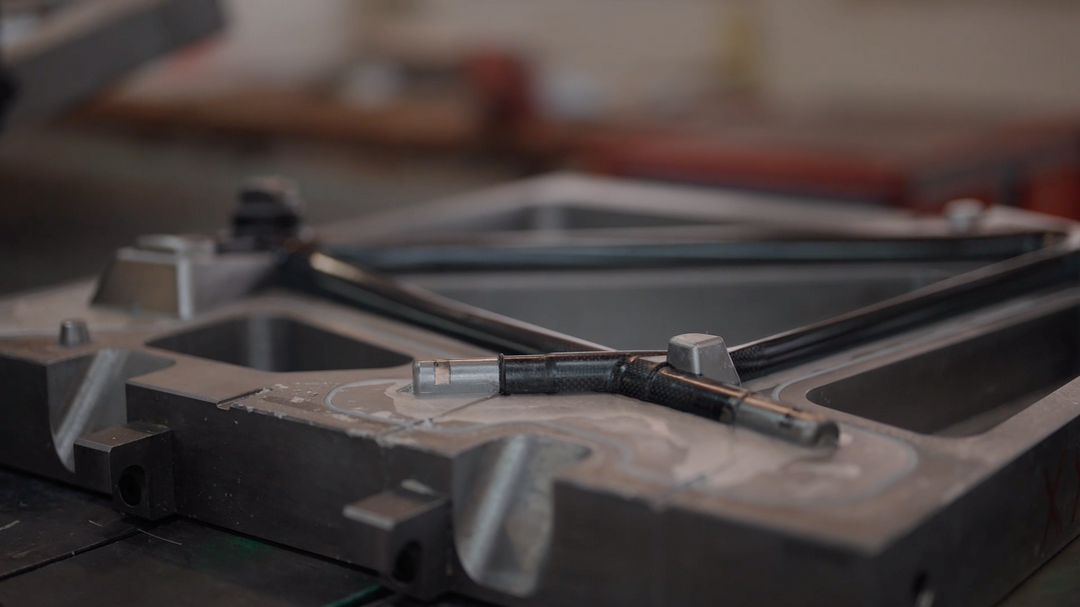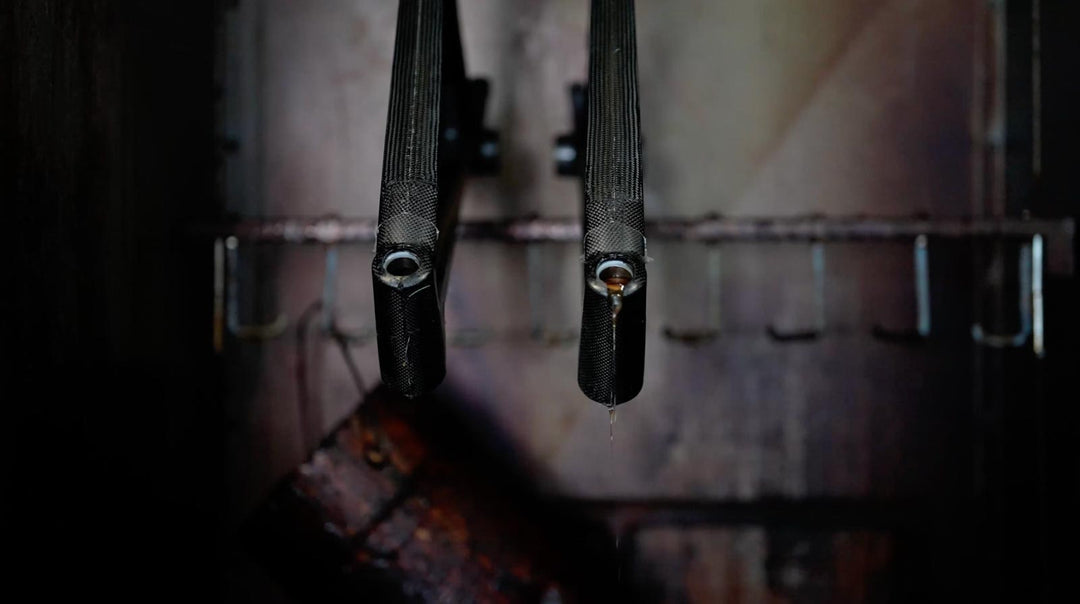locking in unparalled quality
The Resin Transfer Molding (RTM) process is ubiquitous in aerospace and high-end automotive applications but it’s almost unheard of in cycling. The RTM process turns the soft, dry fibre frame layup into the solid, strong and flexible bike frame. The way we do it greatly reduces the potential for defects within the structure and enables us to create superior frames.
minimising defects, maximising strength
Resin Transfer Molding is the best way to minimize defects in the composite structure. By injecting resin under high pressure between rigid external and internal molds, air pockets are pushed out and voids between layers are eliminated. Resin can only flow where the precise moulds allow and only assume shapes that are intended, meaning RTM quality is extremely high-tolerance, uniform and consistent yielding a beautiful near-finished product.
CONTROLLING QUALITY UNDER PRESSURE
Injecting resin under high pressure and temperatures results in extremely uniform fiber wetting, with no voids between layers. Quality is uniform with much smaller variance between frames.


As Perfect on the inside as the outside
Using external and internal mould shapes allows complex shaping and internal reinforcement, with internal surfaces that are as perfect as exterior ones. Prepreg bags create resin pooling and allow wrinkling of fiber layers inside the structure.
reducing our impact on the environment
After moulding, internal wax mandrels are melted and recycled leaving no material inside the frame. The standard prepreg moulding process usually leaves plastic bag or eps foam inside the structure.



